In today’s healthcare environment, the stakes couldn’t be higher. With clinician burnout reaching epidemic proportions and the financial cost of replacing a single physician soaring to $1 million, healthcare organizations are facing an unprecedented crisis that demands more than traditional solutions. The question isn’t whether your organization needs to address clinician satisfaction—it’s whether you’re ready to tackle the root causes with the same strategic rigor you’d apply to any other million-dollar investment.
The Hidden Cost of Inaction
When EHR-related stress affects up to 75% of physicians and healthcare personnel, we’re not just talking about job satisfaction scores. It’s about your organization bleeding money, struggling to keep operations running smoothly, and watching patient care suffer.
Meanwhile, clinicians are drowning in cognitive overload, spending precious evening hours trying to catch up on documentation that should have been completed during their shifts. This isn’t just about job satisfaction—it’s about reclaiming your clinicians’ personal time and mental bandwidth so they can focus on what they do best: delivering high-quality, safe patient care.
Every burned-out clinician walking out the door takes years of knowledge with them, leaves gaps in productivity, and triggers a domino effect of costs that go way beyond what you’ll spend on hiring and training someone new.
Here’s the thing: most healthcare organizations keep treating clinician burnout like it’s a tech problem. Buy new software, tweak some workflows, and everything will be fine, right? Wrong. This is fundamentally about people and organizational change—and it demands a strategy that puts people first.
Beyond Technology: The Power of Human-Centered Transformation
The healthcare organizations that actually turn things around have one thing in common: they focus on their people as much as their processes. Take a major hospital system that was watching their clinician satisfaction scores tank while documentation demands spiraled out of control. They could have thrown more technology at the problem. Instead, they made a different choice—they invested in the people doing the work.
Working with Clariti Solutions , this hospital system took a comprehensive approach that combined lean process improvement with real, personalized support for their clinical teams. Our executive nursing and physician consultants—who bring decades of experience working with large hospital systems—didn’t just hand down new policies from above. They worked directly with providers at every level, from operations leadership to end-users, offering one-on-one support and paying special attention to the nursing staff—the backbone of any hospital.
The transformation was meaningful: working with one of our clients, they reported seeing significant reductions in documentation components for admissions, which impacts the time clinicians spend in the EHR. Admission workflows were streamlined to reduce documentation burden and cognitive load, and workflows began working better for the people using them every day. But here’s what mattered most—clinicians started feeling confident and engaged in their work again, with physicians consistently expressing appreciation for the elbow-to-elbow support and practical tips and tricks that demonstrate their organization’s continued investment in each clinician. That’s something no amount of new technology can deliver on its own.
The Clariti Advantage: Bridging the Change Gap with Proven Leadership
What sets successful transformations apart is understanding that lasting change requires bridging the critical gap between expected outcomes and actual results. At Clariti Solutions , our Clinical Executive Team—comprised of seasoned physician and nursing executives with extensive experience in large hospital systems—focuses on three interconnected elements that form the foundation of sustainable clinician satisfaction:
Culture & Governance forms the bedrock of transformation. Our executives, drawing from their experience with complex healthcare organizations and those on the KLAS Arch Collaborative journey, work to unlock positive culture through effective governance processes. We build sustainable IT service models that focus on user empowerment rather than system constraints, creating an environment where clinicians at every level—from operations to end-users—feel heard, valued, and confident that their organization is investing in their success.
Education & Training represents our commitment to unearthing workforce potential through continuous learning. Our physician and nursing executives customize training programs that address each client’s unique needs, providing comprehensive implementation and functionality support especially for organizations on their KLAS Arch Collaborative journey. This isn’t one-size-fits-all training—it’s strategic education delivered by leaders who understand the complexities of large healthcare systems and who can demonstrate to clinicians that their knowledge and expertise with the EHR is valued and supported.
Operational Efficiency tackles the daily frustrations that erode clinician satisfaction. Our executive team systematically unravels redundant and inefficient workflows and optimizes EHR functionality for individual clinician needs. Every eliminated click, every streamlined process, and every optimized workflow contributes to reducing cognitive burden and restoring clinicians’ focus to patient care while reinforcing that their organization values their time and expertise.
Proven Results That Speak to ROI
The evidence supporting our people-first approach is compelling. Recent KLAS research confirms that organizations investing in focused, human-centered solutions see significantly higher EHR satisfaction scores: 40% increases in EHR satisfaction, 35% improvements in training effectiveness, 45% boosts in user efficiency, and top-quartile performance in governance effectiveness.
Our approach is grounded in the real-world experience of our physician and nursing executives who have successfully led transformations in large hospital systems. They understand the unique challenges organizations face, particularly those navigating the KLAS Arch Collaborative journey, and they know how to create sustainable change that makes clinicians feel valued and supported.
These aren’t just statistics—they represent real clinicians who go home energized rather than exhausted, healthcare organizations that retain their top talent, and patients who receive care from engaged, focused providers who know their organization is invested in their success.
A Partnership Model Built on Executive Experience
Our seasoned clinical executive team—with proven track records in large hospital systems and deep understanding of the KLAS Arch Collaborative journey—works hand-in-hand with organizations at every level, from end-users to operational leadership. We ensure strategic alignment between technology and clinical workflows while maintaining an unwavering focus on demonstrating to clinicians that they are valued, their knowledge matters, and their organization is committed to providing technology that supports their work.
This partnership approach is vendor-agnostic because we understand that lasting change happens regardless of which electronic health record system you use. The key is recognizing that technology and process changes alone aren’t enough—true transformation requires organizations to put people first and show clinicians they are valued. Your clinicians are your most valuable asset, and your technology should work for them, not the other way around. When organizations truly prioritize their workforce as the cornerstone of their success, everything else falls into place.
Clariti Solutions – The Path Forward
Healthcare organizations that successfully improve their clinician satisfaction share a common characteristic: they approach the challenge with the same strategic rigor they would apply to other critical business initiatives, guided by leaders who understand the complexity of large healthcare systems. They recognize that clinician satisfaction isn’t a soft metric—it’s a fundamental driver of financial performance, operational efficiency, and patient outcomes.
The question for healthcare leaders isn’t whether to invest in clinician satisfaction, but how to do it strategically while addressing the real problem: clinicians shouldn’t be finishing work while in their pajamas at home. We want to do more than improve satisfaction—we want to decrease cognitive load and documentation burden and implement the use of smart technology so clinicians can deliver high-quality, safe patient care during their shifts, knowing their organization values their expertise and is invested in their success.
Don’t let clinician burnout cost your organization another million dollars. The time for strategic action is now. When you’re ready to transform clinician satisfaction and streamline workflows to unlock your organization’s full potential, Clariti Solutions —with our proven physician and nursing executive leadership—is ready to deliver the measurable results that matter most: engaged clinicians who feel valued, improved efficiency, and sustainable organizational success.
Managing change. Delivering results. That’s Clariti Solutions.

